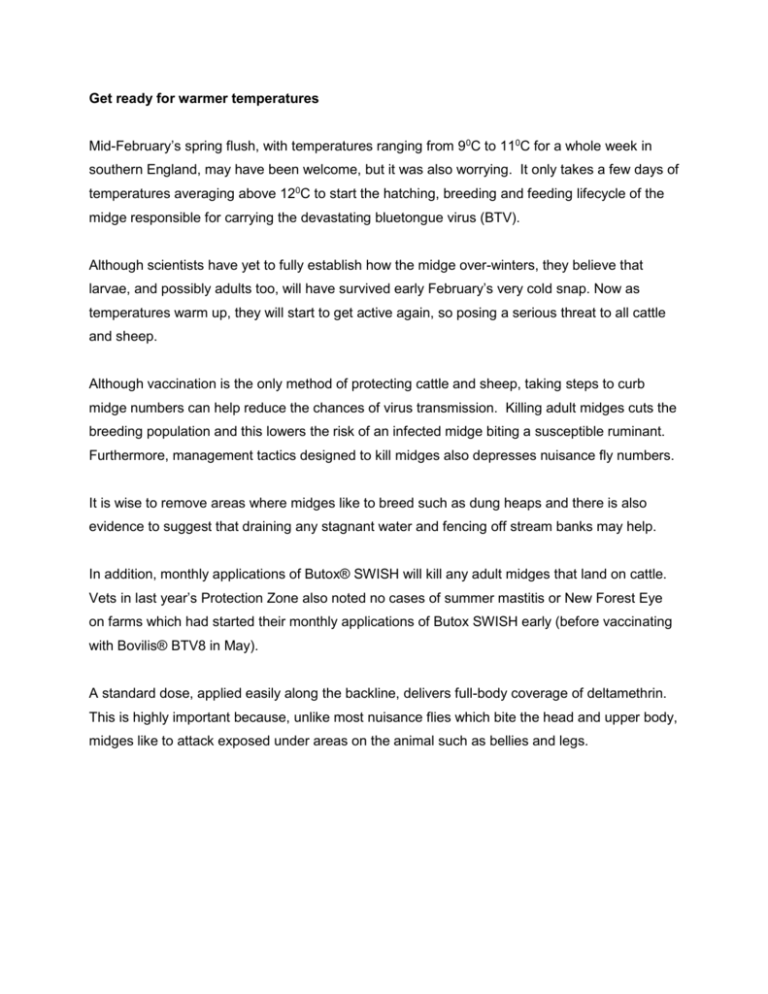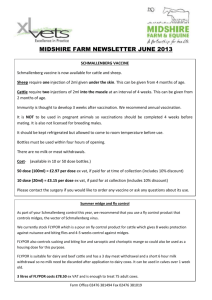Get ready for warmer temperatures
advertisement

Get ready for warmer temperatures Mid-February’s spring flush, with temperatures ranging from 90C to 110C for a whole week in southern England, may have been welcome, but it was also worrying. It only takes a few days of temperatures averaging above 120C to start the hatching, breeding and feeding lifecycle of the midge responsible for carrying the devastating bluetongue virus (BTV). Although scientists have yet to fully establish how the midge over-winters, they believe that larvae, and possibly adults too, will have survived early February’s very cold snap. Now as temperatures warm up, they will start to get active again, so posing a serious threat to all cattle and sheep. Although vaccination is the only method of protecting cattle and sheep, taking steps to curb midge numbers can help reduce the chances of virus transmission. Killing adult midges cuts the breeding population and this lowers the risk of an infected midge biting a susceptible ruminant. Furthermore, management tactics designed to kill midges also depresses nuisance fly numbers. It is wise to remove areas where midges like to breed such as dung heaps and there is also evidence to suggest that draining any stagnant water and fencing off stream banks may help. In addition, monthly applications of Butox® SWISH will kill any adult midges that land on cattle. Vets in last year’s Protection Zone also noted no cases of summer mastitis or New Forest Eye on farms which had started their monthly applications of Butox SWISH early (before vaccinating with Bovilis® BTV8 in May). A standard dose, applied easily along the backline, delivers full-body coverage of deltamethrin. This is highly important because, unlike most nuisance flies which bite the head and upper body, midges like to attack exposed under areas on the animal such as bellies and legs.











